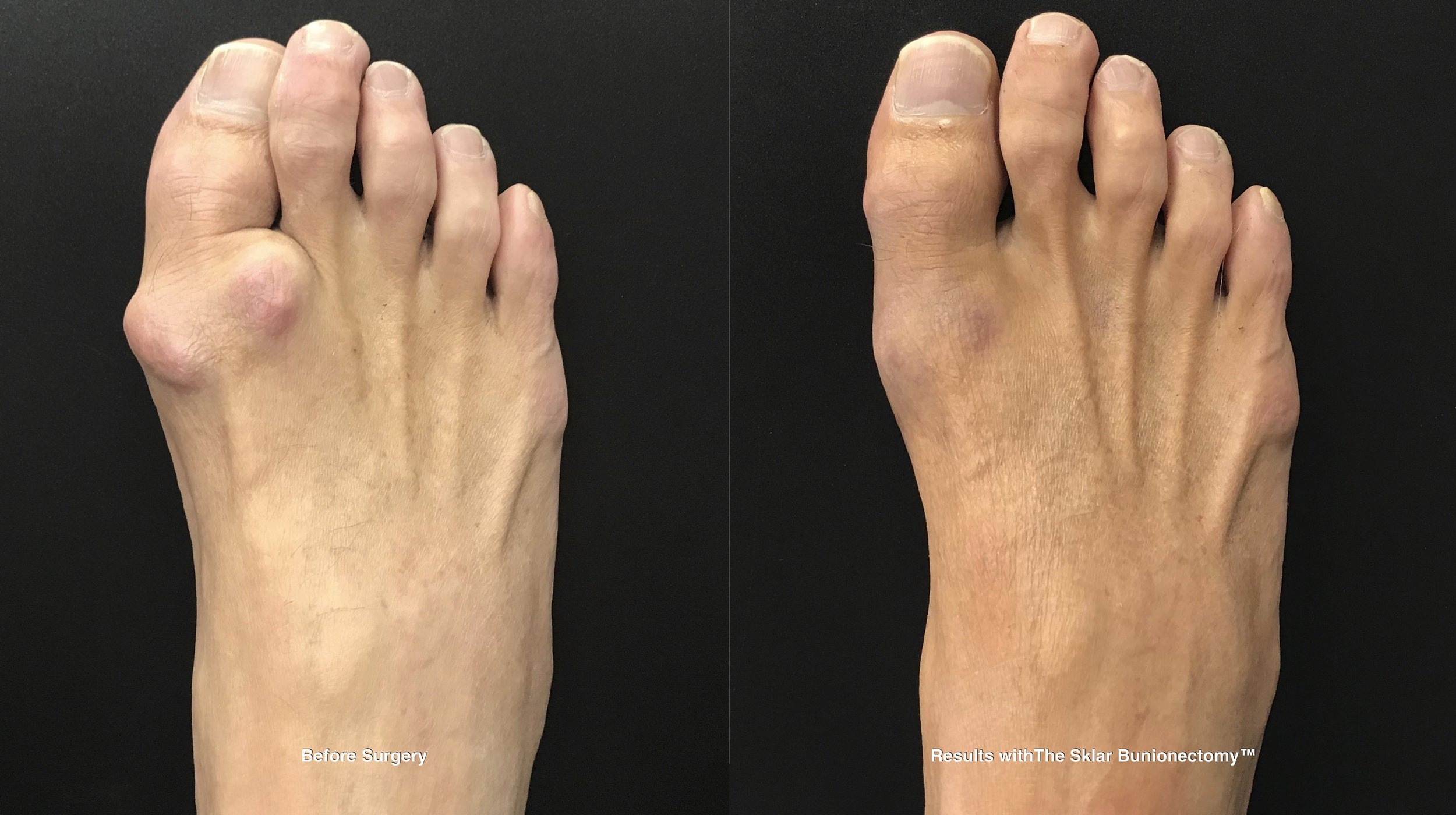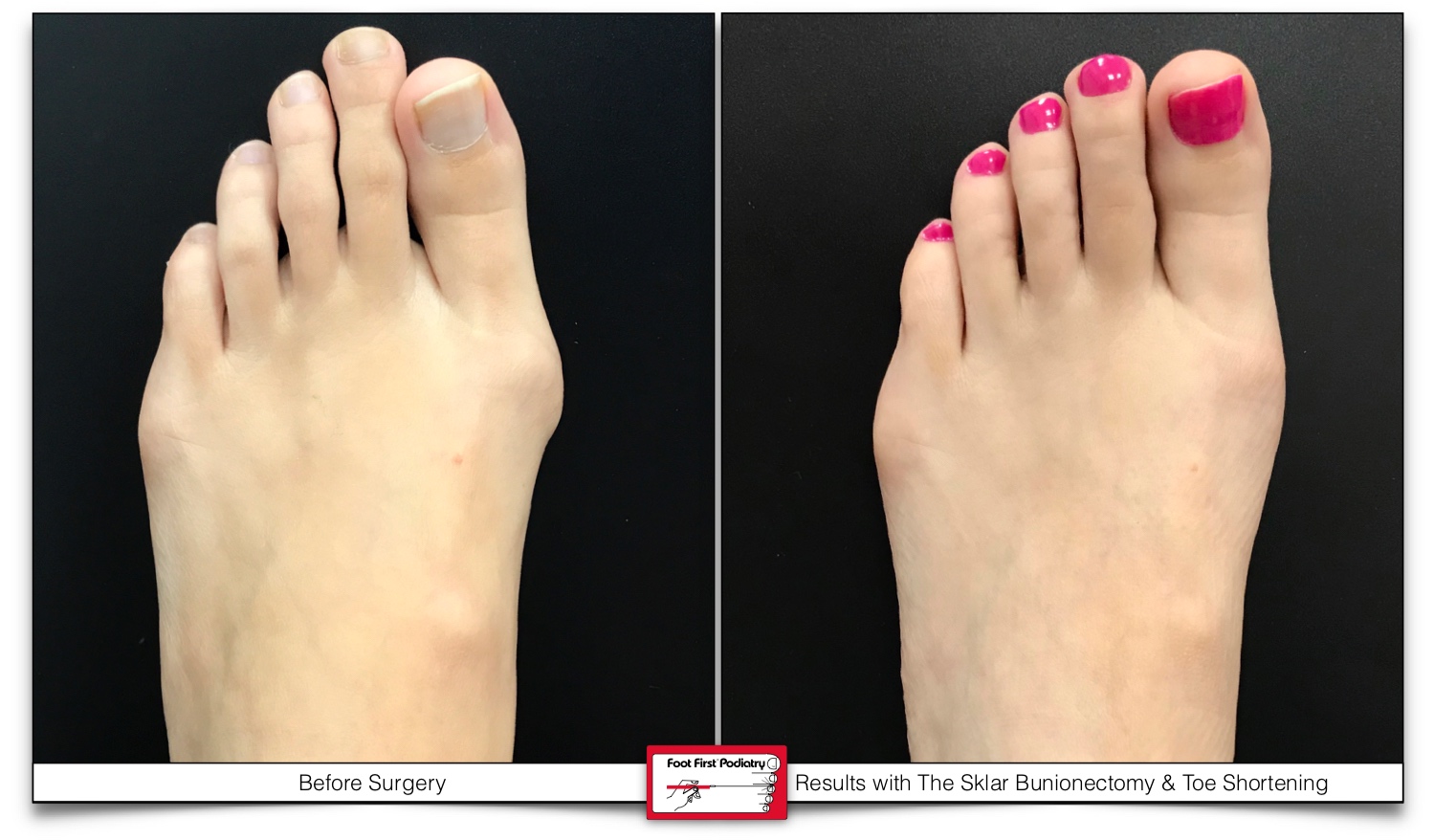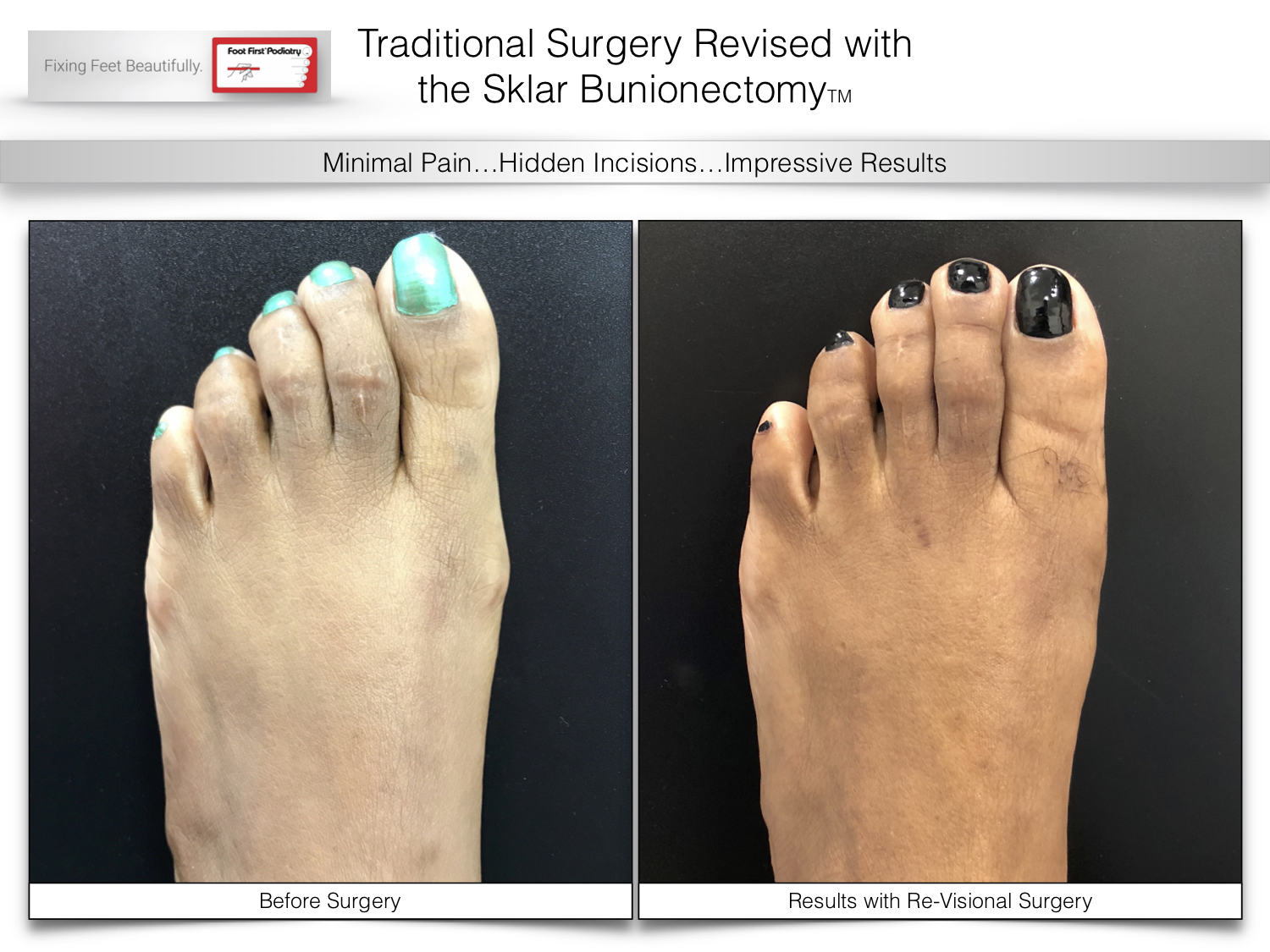A common condition that we treat here at Foot First is arthritis of the big toe, also called hallux limitus or rigidus. In our practice we lovingly call this deformity an arthritic bunion. It is commonly caused by genetics, however it can sometimes be precipitated by an injury to the joint. These types of patients often have a large lump at the top of their big toe, as opposed to the side like in a traditional bunion. Depending on how severe the arthritis is, the joint may be stiff or not move at all. The pain most people experience is over the lump, within the joint, or on other parts of the foot because the joint does not move like it should. The purpose of this post is to give you a basic understanding of what doctors have to offer in the way of helping a patient.
There are two types of procedures that can be performed for an arthritic big toe joint. The first is joint salvage. Joint salvage procedures have the goal of surgically improving the joint without removing it. These procedures include removing the bone spurs (Cheilectomy), joint decompression, and/or joint realignment. Removing the bone spurs can offer comfort if a patient is only having pain around the bump over their big toe, however if they are having joint pain then joint decompression and realignment are also necessary to improve the pain. The advantage to these procedures is that they allow for mobility of the joint so it can keep functioning normally and it is less invasive. The disadvantage to these procedures is that the joint still remains so it is possible to produce more arthritis in the patient’s lifetime. The doctor or the patient will know how fast this will happen, if it does, but generally these are successful long lasting procedures for most people.
The second type of procedures are called joint destructive procedures. These most commonly include joint fusion or joint replacement. Joint fusion is when the cartilage is removed from the joint so it can heal together where the joint will never move again. It is hard for most patients to believe, but most people can live very normally without that joint. Joint replacement procedures remove the cartilage, like in a fusion, but a prosthetic joint is inserted. The disadvantages to these procedures are that they are more invasive and more permanent. For instance, if the patient is unhappy with these surgeries, there are much more limited options when it comes to revision as there is no more joint to work with. The advantage to these surgeries is that since they remove the joint there is no more chance for arthritis to reoccur.
A patient can also attempt conservative therapy if they aren’t ready for surgery. Some different types of treatments include ice, NSAIDS, orthotics, physical therapy, change in shoes, PRP injections, and cortisone injections. At our practice we have a lot of success with change into Hoka brand shoes, and cortisone injections. Cortisone works to decrease the inflammation around the joint greatly reducing pain and swelling. This combo can buy some patients months to years before they elect to have surgery.
If a patient elects to have surgery in our practice we almost always turn to our joint salvage Sklar Bunionectomy. Our procedure is revolutionary in the fact that it both decompresses and realigns the joint without shortening the big toe. When the big toe is shortened it can be cosmetically displeasing, but also put more pressure on the ball of your foot causing further pain. With our procedure there are also no visible scars. Our incision is hidden on the side of the foot which again, provides a functional and cosmetic advantage. When the scar is on top of the foot it creates scar tissue across the joint. This can undo the motion that the surgeon is trying to give the stiff big toe joint in the first place. This works against the goal of surgery. Lastly, our procedure allows you to step on your foot right away, and return to a gym shoe in 2-3 weeks. No cast or crutches are necessary. There is no exercise on the surgical foot for 8 weeks from surgery.
No matter how bad your arthritic bunion pain is, we are ready to help! If you would like a consultation regarding this issue please use the contact us form on our website or give the office a call at 847-352-9221.






